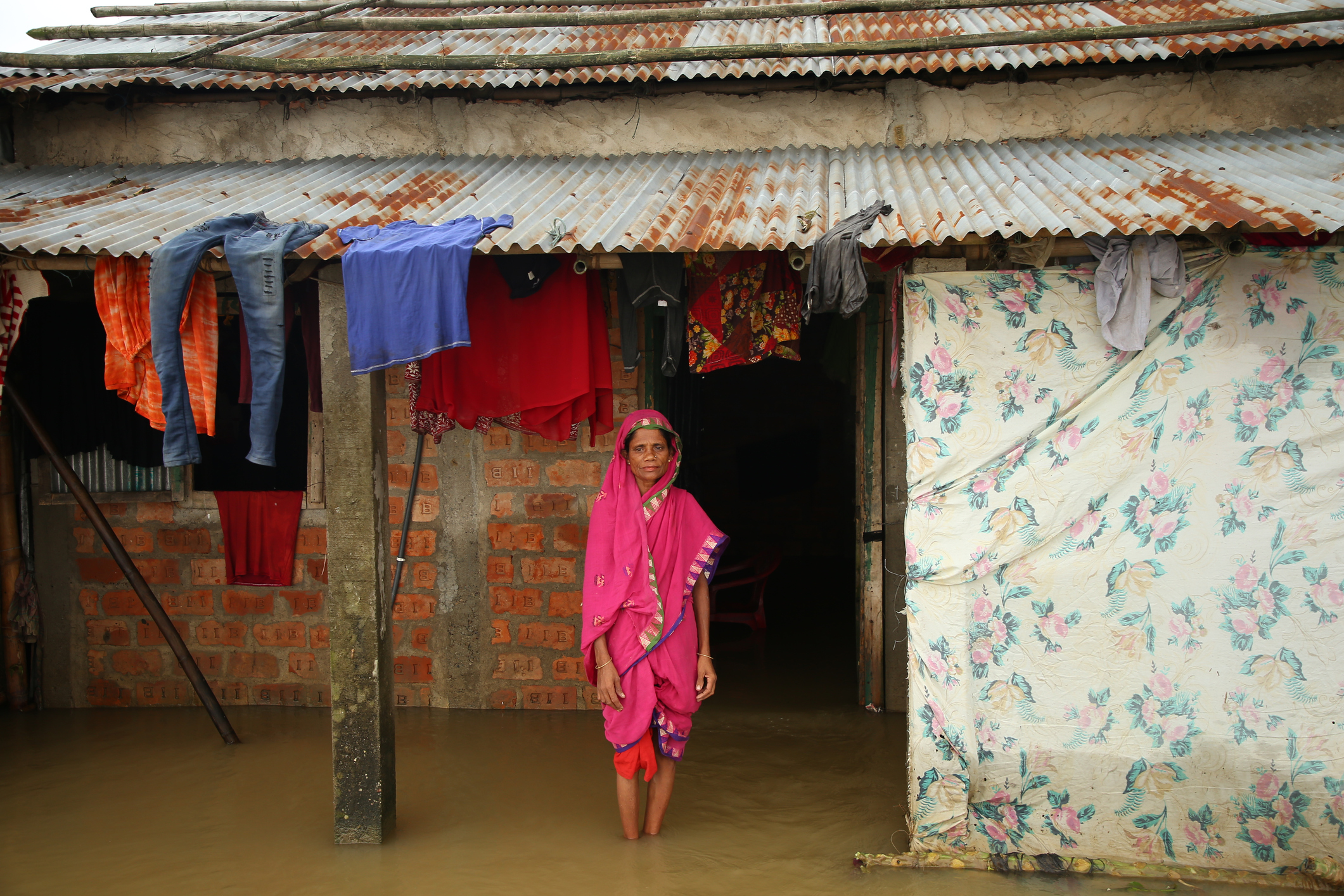The rise in migrant remittances sent to developing countries has led economists to assess the effects of these capital movements on agricultural production in recipient countries. The results of these studies reveal contrasting impacts, both detrimental and beneficial to agricultural activity. Even if the debate remains open, levers for action need to be identified to improve the overall effect of this capital when its direct effect on agricultural production proves negative. To this end, recent analyses of these remittances from the perspective of climate financing are an exciting avenue to explore.
Migrant remittances enable recipient populations to meet certain economic and social needs in developing countries. Recent data provided by the World Bank show that remittances to sub-Saharan Africa have risen steadily in recent years, even during the global crisis: +16.1% in 2021; +6.1% in 2022; +1.3% in 2023 and +3.7% in 2024. This development can be explained, in part, by the adoption and monitoring of relevant policies by the World Bank, such as reducing the cost of inter-corridor transfers.
In addition, these funds are increasingly traced from countries of origin to countries of destination. They pass through formal, more secure mechanisms such as traditional transfer operators (banks, money transfer companies, the post office) or the digital transfer services which are currently on the rise. The transfer instruments used are generally cash, bank transfers, debit/credit cards or mobile money. As the transaction costs per transfer instrument are available and transparent to market players, the decision to make a transfer is made all the easier for migrants. In addition, these revenues are directly and rapidly accessible to their beneficiaries, who receive them in real time. They are non-reimbursable, i.e. free of charge for the recipient, unlike some climate change adaptation funding which is granted to vulnerable countries in the form of loans.
Despite these important developments in the remittance market, which increase the flow of remittances received and their traceability, the fundamental concern seems to be to find levers to improve the effect of these financial resources on economic activity. In this article, we analyze the interaction of migrant remittances with three forms of climate variability – air pollution, temperature variations and rainfall variations – on agricultural production in sub-Saharan Africa. Agricultural is one of the most exposed sectors to climate change, and its adaptation needs in Africa are substantial and growing, as shown in chapter 9 of the sixth report of the Intergovernmental Panel on Climate Change. The results aim to inform political actors seeking to identify sources of climate financing for the implementation of climate change adaptation strategies in vulnerable countries, complementary to the current financial mechanisms explicitly retained by the international community and presented by the OECD.
The concept of climate variability manifests in many ways: greater fluctuation in temperature and precipitation, rising air pollution and a greater occurrence of extreme events such as droughts, floods, storms and so on. The list of climatic shocks grows longer every year. In sub-Saharan Africa, air pollution is of particular concern. Chad and Burkina Faso are among the world’s top ten most polluted territories. In addition, temperature and precipitation variations are increasing rapidly in this region and are having a negative impact on the agricultural sector, as shown by the report on the state of the climate in Africa,. Strategically directing migrant remittances towards activities designed to adapt to these climatic variations would improve economic indicators, including agricultural production. We offer several mechanisms for transmitting the impact of migrant remittances on agricultural production, via adaptation to climate variability.
- Remittances, air pollution and agricultural production
Air pollution affects agricultural production both directly and indirectly. On the one hand, air pollution is harmful to human health, including those working in the agricultural sector. It reduces the availability of a healthy workforce, which is a constraint on agricultural production in developing countries. In Africa, a staggering 1.2 billion people have no access to clean cooking facilities. These people depend entirely on cooking with coal, wood and biomass. They are both contributors to, and victims of, air pollution. On the other hand, this pollution negatively affects plant growth and contributes to reducing agricultural production in these same countries, and increasing losses and damage in this sector. Tools enabling access to clean cooking, i.e. cooking that does not pollute the air, are readily available and affordable for low-income countries. These tools are mobilized by the public and/or private sector, but are not sufficiently visible. Recent studies[TK1] shows evidence that remittances received in developing countries mitigate CO2 emissions locally when directed towards environmentally friendly investments.
- Remittances, rainfall variations and agricultural production
The importance of the agricultural sector in Africa is well established. In some countries in the region, agriculture contributes an estimated 60% of gross domestic product. Economists also recognize that agriculture is highly dependent on variations in rainfall, which makes production vulnerable. Cash remittances are one of the indirect support mechanisms for agricultural activities in a context of reduced rainfall. They facilitate the management of the irrigation system or finance the purchase of suitable inputs, including fertilizers, and support production in the sector. In certain contexts, remittances are positively correlated with mechanization of agriculture, access to bank credit, and participation in collective flood adaptation actions such as preparation and restoration of degraded areas. This increases the ability of beneficiary households to adapt to climatic shocks.
- Remittances, adaptation to temperature variations and agricultural production.
Rising temperatures are another aspect of climate change that requires policy responses in terms of adaptation. Temperature variations, like other climatic risks, directly deteriorate agricultural production and yields. To adapt, experts recommend “smart” agriculture, combining resilient agricultural practices and technologies. Migrant remittances can thus facilitate farmers’ access to these recommended agricultural techniques and practices.
Our paper determines the effect of migrant remittances on agricultural production using climate data for a set of 29 Sub-Saharan African countries over the period 1990-2020. Using the Common Correlated Effect Mean Group estimator, we show that a 1% increase in remittances paradoxically reduces the agricultural production index by 3.32%. This phenomenon could be explained by the fact that these revenues are not derived from the agricultural work of the beneficiaries. A form of dependence would then be created on this new source of income, reducing not only participation in work, but also the beneficiaries’ efforts in production.
However, when we take climatic variability into account in the analysis (interaction variables of these capital inflows and each of the climatic variables), the effect becomes significantly positive. We find, for example, that a 1% increase in migrant remittances interacting with rainfall variation increases the agricultural production index by 0.022%. This suggests that remittances, when directed towards helping farmers adapt to climatic variability, do not hinder agricultural production, and in fact support it positively. In a context of reduced rainfall, the transfers enable farmers to hedge against this climatic risk by investing in irrigation systems or paying for appropriate fertilizers. They also make it possible to invest in resilient farming practices and techniques, such as financing training programs.
Adapting to climate change is therefore an opportunity to use remittances for investment purposes, rather than for day-to-day consumption. Such capital is therefore a complementary and significant source of financing for the successful adaptation of the agricultural sector to climate change.
Consequently, policymakers should promote transfers for climate reasons over and above transfers for purely altruistic or economic motives. To achieve this and encourage the use of transfers for climate change adaptation purposes, all stakeholders in the transfers market, mainly governments and their international partners, need to raise awareness.







